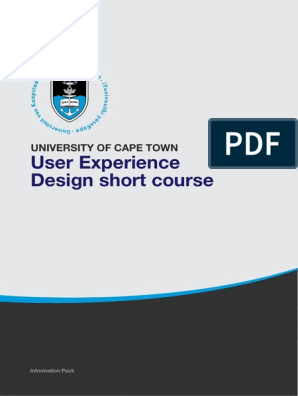0% found this document useful (0 votes)
249 views5 pagesGoogle UX Bootcamp Calendar
The Google UX Bootcamp consists of 7 courses over 3-5 weeks. The objective is for students to complete 4 design projects to build their portfolio and be ready for entry-level UX design jobs. The first course covers foundations of UX design. Subsequent courses teach the design process, wireframing, prototyping, user research, and creating high-fidelity designs and prototypes using tools like Figma. Upon completing the bootcamp, students will have a portfolio of work and be equipped for UX design roles.
Uploaded by
Kaisheem Fowler-BryantCopyright
© © All Rights Reserved
We take content rights seriously. If you suspect this is your content, claim it here.
Available Formats
Download as DOCX, PDF, TXT or read online on Scribd
0% found this document useful (0 votes)
249 views5 pagesGoogle UX Bootcamp Calendar
The Google UX Bootcamp consists of 7 courses over 3-5 weeks. The objective is for students to complete 4 design projects to build their portfolio and be ready for entry-level UX design jobs. The first course covers foundations of UX design. Subsequent courses teach the design process, wireframing, prototyping, user research, and creating high-fidelity designs and prototypes using tools like Figma. Upon completing the bootcamp, students will have a portfolio of work and be equipped for UX design roles.
Uploaded by
Kaisheem Fowler-BryantCopyright
© © All Rights Reserved
We take content rights seriously. If you suspect this is your content, claim it here.
Available Formats
Download as DOCX, PDF, TXT or read online on Scribd
/ 5

























































































